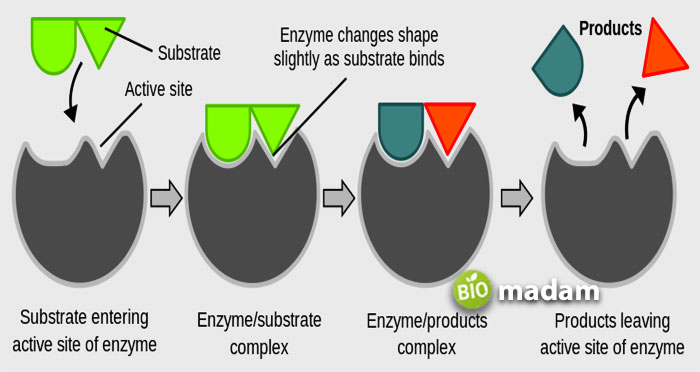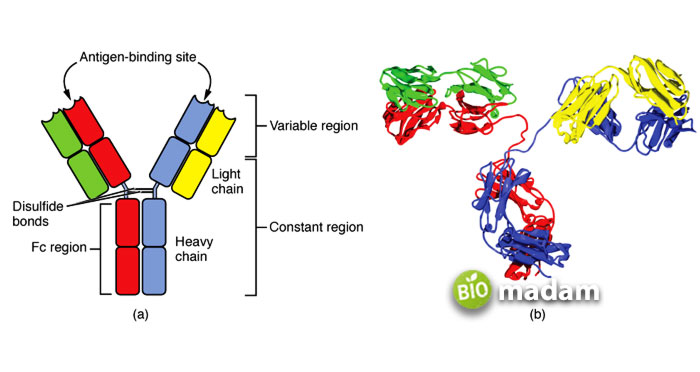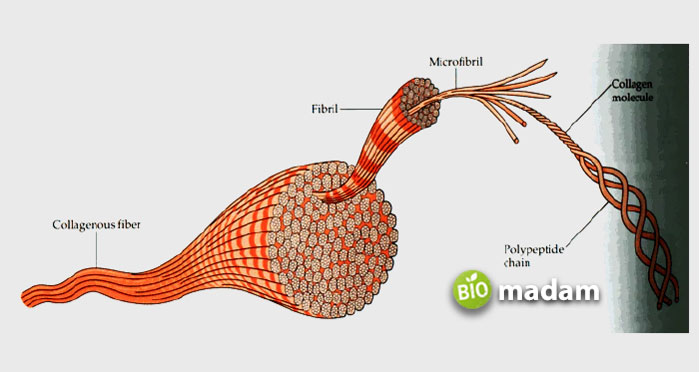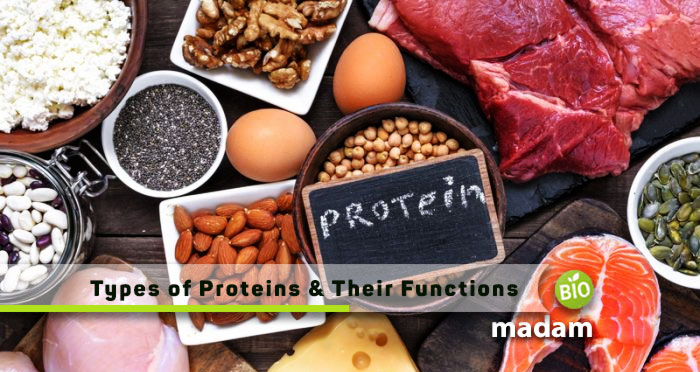Proteins are the basic structures of living organisms. They play a vital role in maintaining your body shape and functions besides vitamins, minerals, and other macronutrients. Proteins are in muscles, hair, nails, and many other biomolecules within the body, and are entirely different from vitamins and minerals. There are several types of proteins to perform specific functions in our body. Besides fats and carbohydrates, proteins are the third macronutrient group essential for life. Here’s everything you need to know about the different types of proteins and their functions.
What are Proteins?
Proteins can be called the basic building unit of living cells. Chemically, they are large molecules with a high molecular weight. They help in body development and perform different functions. Proteins are also organ-specific. For example, not all proteins you find in the muscles are present in your heart or liver.
They are composed of combinations of amino acids combined in long chains. Amino acids are of 20 types. The structure and function of proteins depend on the amino acid composition. Some of the amino acids are essential, while others are non-essential. The body produces non-essential amino acids. However, you have to intake essential amino acids as your body does not manufacture them.
You need 10% to 35% of your daily calorie intake from protein. It comes to around 50 to 175 grams for every 2000 calories. However, 45% to 65% of carbs are essential in total calories. For each gram of protein you eat, you get around 55mg leucine, 18 mg histidine, 7mg tryptophan, 25mg isoleucine, 25mg methionine, and cysteine, 27mg threonine, 47mg phenylalanine, 51mg lysine, and 32mg valine.
Types of Proteins and their Functions
Proteins are divided into many categories according to different parameters. The most common classification is based on their function. The eight types of proteins are:
- Enzymes
- Hormones
- Antibodies
- Structural proteins
- Transport proteins
- Contractile proteins
- Storage proteins
- Receptor proteins
Enzymes
Enzymes are biocatalysts that catalyze biochemical reactions. All enzymes are proteins and enable an organism to carry out important biological processes in the body. They are involved in almost all metabolic processes.
Pepsin is an enzyme that facilitates the breakdown of proteins, and lactase breaks down lactose in milk. Enzymes in saliva initiate the process of digestion. They also help in the formation of new molecules by analyzing genetic information.

Hormones
Besides enzymes, hormones are also vital to body functioning. Hormones help in the coordination of body functions. They are composed of messenger proteins. Endocrine glands secrete hormones, whereas, the other, exocrine glands produce enzymes. They signal the cells to perform specific functions. All hormones have specific functions and act on particular cells called the target cells. If the hormones in the body are not at their optimum level, it can lead to serious health issues.
Various hormones like testosterone, estrogen, progesterone, growth hormones, corticosteroids, and insulin have a certain target function. For example, insulin regulates blood glucose levels by regulating glucose metabolism. Growth factors signal cell differentiation and control protein synthesis. Moreover, testosterone (an endocrine hormone) contributes to nervous system, formation of male secondary sex characters, skeletal muscles, skin, hair, and bone marrow.
Antibodies
Antibodies are specialized proteins and an essential part of the immune system. Another name for antibodies is defensive proteins. There are different types of antibodies involved in the defense mechanism of the body. Antibodies are typically manufactured when the body interacts with an antigen. The antibodies are antigen-specific and act in a certain way. They can travel to distant sites through the blood to perform an action. Antibodies often hold the invasive antigen and wait for the white blood cells to kill it. Antibodies are of five types – IgG, IgM, IgA, IgD, and IgE.
Examples of antibodies are Rh blood groups. Let’s say you have an A-type blood group.
It means your blood has A-type antigens and B-type antibodies. People with the AB blood group do not have A or B antibodies. That is why they can accept blood from all blood groups.

Transport Proteins
Transport proteins are involved in carrying vital materials across the cell. They carry molecules from one place to another by binding with them. There are multiple kinds of transport proteins in cells, including hemoglobin, myoglobin, calbindin, and cytochromes.
Hemoglobin acts as an oxygen transport protein in the body. It carries oxygen from the lungs to tissues and other body organs. Calbindin helps in the absorption of calcium in the intestine. Moreover, cytochromes act in the transport of electrons.
Contractile Proteins
As the name suggests, contractile proteins are involved in muscle movement and contractions. They are also known as motor proteins. Actin and myosin are contractile proteins present in muscles. Eukaryotes have a significant amount of actin that helps ensure the proper functioning of the body through the nervous system.
Myosin is also found in cells. It gives power to the muscles to contract and carry out tasks. Troponin is another contractile protein found in skeletal cells as well as cardiac tissues. Troponin I is only present in the myocardium. It is an exclusive cardiac contractile protein. Too many contractions can lead to complications such as cardiac issues.
Storage Proteins
Storage proteins store amino acids and mineral ions until the body needs them. They are mobilizable and help in the growth and maintenance of the organism. They reside in both vegetative and reproductive cells.
Some examples of storage proteins are ferritin and ovalbumin. Ferritin is the site for iron storage, whereas ovalbumin is present in egg whites and casein. The latter plays a major role in embryonic development.
Structural Proteins
Structural proteins make up the structure of the body. They are also commonly referred to as fibrous proteins. They are long, wire-like in shape. Besides playing their role in maintaining the form and structure of the body, they facilitate movement. They are also present in the cell and give an internal structure to the cell.
Collagen, elastin, and keratin are fundamental structural proteins in the body. Collagen forms the connective network of the skin, muscles, tendons, ligaments, bones, and cartilage. On the other hand, keratin strengthens hair, teeth, nails, and skin.

Receptor Proteins
Receptor proteins control the entry and exit of molecules from the cell. They also bind to signaling molecules to initiate a chemical response or signaling cascade. Some also stimulate endocrine glands to secrete hormones, whereas others activate enzymes. They are also involved in cell adhesion, cell activation, and signaling pathways. These proteins majorly manage the transport of nutrients and water through facilitated diffusion.
The Bottom Line
Proteins are classified into eight types: hormones, enzymes, antibodies, structural proteins, transport proteins, contractile proteins, storage proteins, and receptor proteins. Each of them performs a specific function. Hormones facilitate normal body functions, whereas enzymes regulate the biochemical processes within the cell. Contractile proteins like myosin and actin help in muscle contraction. At the same time, antibodies help protect the body against different types of antigens.
FAQs
What are the functions of proteins?
All different types of proteins perform certain functions. They majorly contribute to the structure of the cell and muscles, cell-to-cell recognition, defense mechanism, and transport of materials.
What is the structure of proteins?
Amino acids are the building blocks of proteins. They are small organic molecules of 20 varying types. The amino acids join to form long chains. Proteins have a high molecular weight.
What are the types of muscle proteins and their functions?
Contractile proteins like actin and myosin are present in muscles. They form thick and thin filaments and help in muscle contraction. Neurons signal the muscles to contract per need.
What are the types of membrane proteins and their functions?
There are various types of proteins found in cell membranes, including intrinsic, extrinsic, enzymatic proteins, etc. These proteins helps a cell maintain its shape, transport material, and facilitate communication.
What are the types of plasma proteins and their functions?
Globulins, albumins, and fibrinogens are three types of plasma proteins. They contribute to the immune function, manage the osmotic pressure in the blood, and help in clotting.

Anna has completed her degree in Pharmacy from the University of Hawaii. She is serving as a research assistant in a pharmaceutical company. She had a great interest in writing blogs, traveling to different parts of the US, and trying delicious recipes in her spare time.

